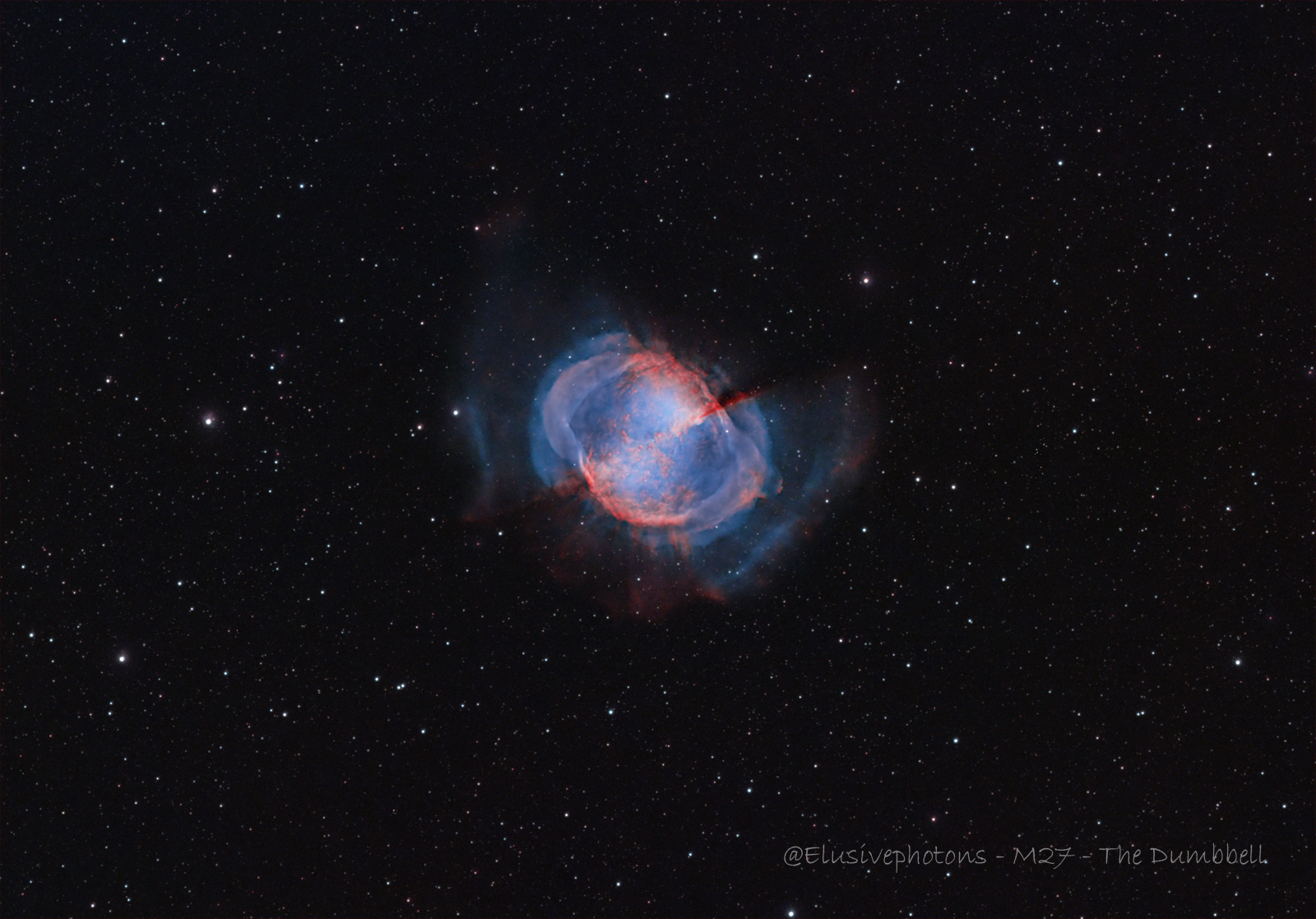Date: September 9th, 10th & 21st, 2023
•
Exposure: 91 x 5 minutes (7h 35min)
About This Image
Gear:
Telescope: Stellarvue SVX130T-R
Mount: Software Bisque Paramount MX
Camera: Player One Poseidon-C Pro
Filter: Optolong L-Ultimate 2"
Accessories: 3.5" Feathertouch • Stellarvue SFFX-2
Guiding: SVBony SV165 Mini Guide Scope • ASI462MC
Software: Photoshop • PixInsight • TheSkyX • Starkeeper Voyager
Description:
Messier 27, also known as the Dumbbell Nebula, is a planetary nebula located in the Vulpecula constellation(2). Here are two descriptive paragraphs about Messier 27, incorporating various facts:
Messier 27 is a large and bright planetary nebula, making it the second brightest in the sky, after the Helix Nebula in Aquarius(2). Its high surface brightness and distinct shape make it one of the easiest planetary nebulae to observe[2]. When viewed through backyard telescopes, Messier 27 appears as a dumbbell-shaped object with two bright lobes, hence its common name, the Dumbbell Nebula(1). The English astronomer John Herschel first compared its shape to that of a dumbbell when he observed it in 1828(2).
The Dumbbell Nebula has an estimated age of up to 15,000 years, and its expansion rate is approximately 2.3 arc seconds per century(4). It is situated at a distance of 1.25 kiloparsecs from Earth and has a visual brightness of 7.4 magnitudes(3). The nebula's apparent dimensions are 8.0×5.7 arc minutes(3). Messier 27 can be easily seen in 10×50 binoculars as a small patch of light, while in 15×70 binoculars, its central region becomes more prominent against the dimmer outer parts(4).
Sources:
- (1) https://science.nasa.gov/mission/hubble/science/explore-the-night-sky/hubble-messier-catalog/messier-27
- (2) https://www.messier-objects.com/messier-27-dumbbell-nebula/
- (3) https://www.universetoday.com/33035/messier-27-dumbbell-nebula/
- (4) https://www.constellation-guide.com/dumbbell-nebula-messier-27/
- (5) https://www.galactic-hunter.com/post/m27-the-dumbbell-nebula
Distance: 1,360 light-years
Size: 3 light-years
| 


